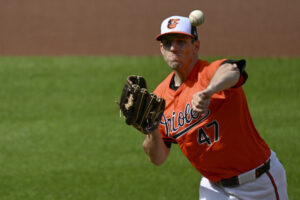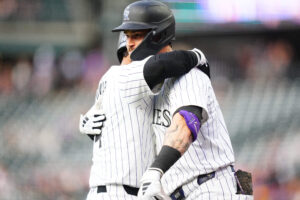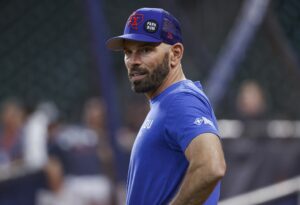The Atlanta Braves have a long and storied history. They were one of the first teams ever to play professional baseball. The franchise also holds the distinction of being “the oldest continuously operating professional sports franchise in America,” according to MLB.com. During that time, they have won three World Series, one World Championship (pre-World Series), 17 National League pennants, and 19 Division titles. They have also won the Wild Card once. The team boasts 55 players that have made it to the Hall of Fame, with 10 having their numbers retired.
In this series, we will delve into that history by decade. From the team’s humble beginnings in Boston to its thriving success in Atlanta, we will explore this story. It is perhaps one of the more overlooked sagas in baseball. We speak about the New York Yankees, Chicago Cubs, Cincinnati Reds, and St. Louis Cardinals. The Boston Red Sox have their legacy spoken of quite often as well. But what of the Atlanta Braves? Let’s journey together and find out.
Atlanta Braves History By Decade: 1870s
The Founding Year
The Braves were founded as a franchise in 1871 by two men: Ivers Whitney Adams and Harry Wright. The latter of the duo had been the manager of a Cincinnati team, the Red Stockings, before heading to Boston. Adams put $15,000 on the table, and a new team was born. It was quickly established and assimilated into the new National Association of Professional Baseball Players.
Since the National League did not begin until 1876, statistics on these early years are comparatively minimal. However, the young franchise was considered one of the best. The National Association pennant flew in Boston for three years in a row (1872-75). The Red Stockings were the cream of the crop in the league. The 1871 team went 20-10, hit .310 as a team, and finished second in the standings. Future Hall of Famer Al Spalding was the team’s only starting pitcher, going 19-10 with a 3.36 ERA, a 1.442 WHIP, and a 127 ERA+. He also completed 22 of his 31 starts.
1872-75
The next three seasons bequeathed great success on the team. In 1872, they won 39 of the 47 games they played and took their first pennant. Once again, Spalding led the way, going 38-8 with a 1.85 ERA, a 1.097 WHIP, and a 196 ERA+. He walked only 27 batters in 404.2 innings of work and completed 41 of his 48 starts. His offense was equally impressive, as he hit .354 with 47 RBI in 237 at-bats. His OPS+ was 144. Through the next three seasons, he continued to be the face of the franchise. He won 41 games in ’73, 52 in ’74, and 54 in ’75.
That’s not to say that he was the only player contributing to the team. Second baseman Ross Barnes won two batting titles during the stretch. He hit .430 in 1872, and .431 in 1873. His OPS between the two seasons was 1.061, and his OPS+ was 208. Overall, he ranks #1 in WAR in the team’s short National Association history. Catcher Cal McVey hit .431 as a rookie in 1871 and led the league in slugging (.517), RBI (87), and OPS (.873) in 1875. Shortstop George Wright was a standout as well, hitting .350 from 1871-75 with 483 hits and 70 doubles in 262 games.
1876
In 1876, the Red Stockings transitioned into the newly formed National League. They did so with teams like the Cubs (then known as the White Stockings) and the Philadelphia Athletics. Unfortunately for the Boston club, most of the players that were on the original team did not make the journey with them. Spalding, McVey, and Barnes all jumped to the White Stockings, where they repeated their success. Despite this, Wright stayed with the team, only to watch them plummet from a 71-8 record in 1875 to a 39-31 mark in 1876. The team batting average fell from .321 to .266, and its ERA rose from 1.87 to 2.51.
Just like the current Braves, the ’76 Red Stockings were comprised of new players and grizzled veterans. The youngest on the team was 18-year-old rookie catcher Lew Brown, who hit .210 in an attempt to fill McVey’s shoes. Older veterans like third baseman Harry Schafer and outfielders Jim O’Rourke and Jack Manning also tried to carry the team. But the weight of so many significant departures fell on the Red Stockings, and they finished fourth in the NL’s inaugural campaign.
1877
1877 brought brighter days for Boston. To begin, catcher/first baseman Deacon White returned to the team from Chicago. His bat came with him, as he lit up opposing pitchers. He slashed .389/.405/.545 in ’77, leading the team with 49 RBI and 103 hits in 59 games. He struck out a minuscule three times all season and walked eight times. His OPS+ was 193. Secondly, the team picked up right-hander Tommy Bond in the offseason. He led the league in wins (40), ERA (2.11), and strikeouts (170). In short, the team topped the charts in nearly every major offensive and pitching category. They finished atop the standings and claim the first National League pennant in team history.
1878
1878 was another successful year, as the Red Stockings won their second consecutive flag. They compiled a 41-19 record and finished four games ahead of the second-place Reds. Bond repeated his success on the mound, winning 40 games with a 2.06 ERA. He led the league in strikeouts (182), innings pitched (532.2), and completed 57 of his 59 starts. However, the offense fell flat. With White’s departure, the team lost a critical bat. For the first time as a franchise, not a single Red Stocking had an average of .300 or better. Collectively, the team slashed .241/.253/.300, and post a meager 75 OPS+. They finished last in the league in walks (35), and second in strikeouts (154). This only goes to show what a valuable player Bond was, as he truly carried the team to the pennant.
1879
In 1879, the Red Stockings carried two starting pitchers for the first time in three years. Rookie Curry Foley was called upon to help support Bond. He did well, posting a 9-9 record, a 2.51 ERA, a 1.175 WHIP, and a 101 ERA+ in 16 starts. He completed all of them and struck out 57 batters in 161.2 innings pitched. The Red Stockings offense pulled itself up, thanks to some newcomers. Rookie first baseman Ed Cogswell hit .322 with 18 RBI and 76 hits in 49 games. Veteran outfielder Charley Jones led the league with nine homers, 62 RBI, 85 runs scored, and 29 walks. He hit .315, posted a 180 OPS+, and pounded out 112 hits in 83 games. However, the result of all this was a second-place finish, five games back of the Providence Grays.
Braves History Main Photo:
Embed from Getty Images






